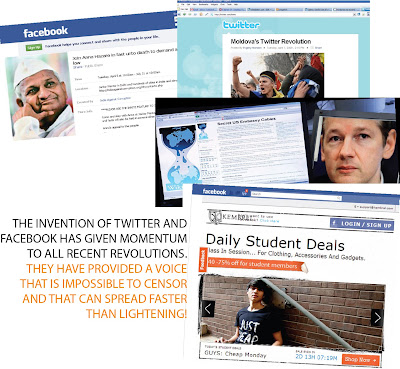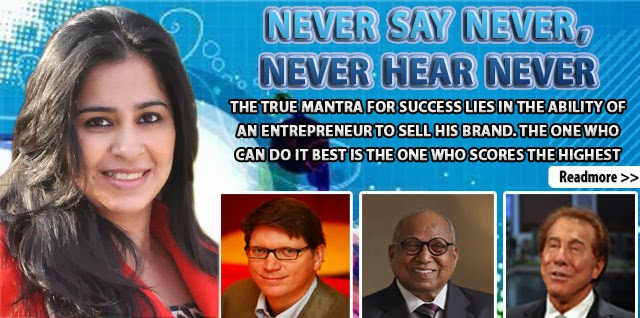WHAT’S YOUR STORY?
It started with a rivet. Born in Germany this man migrated to USA, settled in San Francisco and became a trader. Jacob Davis a tailor, started buying cloth from him to stitch pants. One of his customers kept ripping his pockets on his pants & Jacob had a tough time repairing it time & again, till he came upon the idea of putting copper rivets at the stress points on the pocket corner. His “riveted work pants” very quickly became a craze. Worried that someone would steal his idea, he called on his friend, the trader. Together they patented his invention. For twenty years Jacob and his friend Levi were the only company allowed to make riveted work pants. This is how the story of Levis “jeans” started – with a rivet.
In today’s world too, its “riveting” stories that bring success. Every time you look at a Levis jeans you remember the rivet story. Good stories stick on and make the brand name stick on too.
Stories don’t just save lives
There was woman named Scheherazade who was one of the many slaves of the Sultan. The Sultan was known for beheading anyone who displeased him. The intelligent woman found a unique way to save her life… every night she told him a story, but would stop at the most exciting part and make the Sultan wait until the next evening to hear the end. For 1001 nights she did this. It impressed the king so much that he not only granted her life, but also married her.
A great story is what is responsible for the survival of great brands too. We all love stories. We love to listen to them, narrate them & we all love great story tellers. Great stories never die – look at the Mahabharata and the Ramayana. Similarly great brands built on great stories live on.
“Intel Inside” is one of the shortest, yet one of the most successful stories ever told. Not many know or understand the benefit of an Intel processor in their computer, yet it’s these two words that make them feel confident that they have made the right choice.
According to some thinkers what really turns a product into a “brand” is intelligent “PR” (Public Relations). You need to let out an interesting story to the media, for people to notice you. Later on, advertising can be used to sustain the brand & survive. One company that used it the best to its advantage was the UK-based “Innocent” brand of smoothies. There was a “story” woven into every ‘P’ of marketing, right from the name – well chosen, to represent that everything in the bottle was “fresh and unadulterated” to the packaging. Short on budget, they launched the drink from a stall put up in a little music festival in London. On top of their stall they put up a sign which read thus: “Do you think we should give up our jobs to make these smoothies?” and put two bins labeled “Yes” & “No”. If you liked the smoothies you had to put the empty bottles in the “Yes” bin. At the end of the weekend the “Yes” bin was full. The two friends resigned from their jobs, and “Innocent” was born. Not just the brand name, even the logo & the packaging was designed in such a manner as to tell the story of their company’s philosophy. Their aim was to design the packaging such that it told a three word story i.e. the contents are “home-made, natural, and posh.” This helped them differentiate from the hundreds of “fresh juice” brands crowding the marketplace. The space behind the logo on the bottle was used to put down a “banana phone” number where you could call and let the company know what you thought about smoothies. You could even mail them. The unique way of telling your story via the packaging caught the fancy of consumers & shook up the beverage market. The company showed it was a good story & not big budgets that was required to win over customers & market share.
Look at great brands, and you are bound to find an interesting story. Coca- Cola, has the story of its secret formula locked up in the headquarters in Atlanta, KFC has stories of its 11 secret spices that make its chicken so “finger lick in’ good”. It’s not because Harley Davidson is the best bike in the world that people are ready to wait for months to get their dream machine, willing to pay a premium for it. When they buy a Harley, they buy a little bit of its heritage, its history too! What’s history but a great story told down the generations, which gives the brands that enigma, that power to stand out.
Stories don’t just build market share
Think of your favourite advertisements & most of them would be those that tell a story, which does not necessarily brag about the products’ attributes. The Zoozoo ads are so watchable not because the characters are so cute, but also because each ad has a short story to tell.
“They laughed when I sat down at the Pram, but when I started to play…” one of the most memorable headlines in advertising, Why? Because it told a story. Stories help build emotional connections with people. For years Coors beer told the world about its “unrelenting commitment to brewing with only Rocky mountain water” through its advertisement. This created a perception in the minds of consumers that the beer must be crisp & great to taste because of the mountain water.
If you can tell an interesting story in 60 seconds you can build a great brand. FedEx, made a whole new business model on the basis of a simple story line “wherever your destination, in the United States, your parcel would reach by 10 am the next day”. People loved it & even used it in a movie. As Julia Roberts jumps onto a FedEx truck to escape from her marriage in the movie “The Runaway Bride”, a spectator remarks, “Where’s she going?” His friend answers “Wherever it is, she will reach by 10 AM.” Great stories live on. The Aesop’s fables were written in 300 B.C. and we still read them & enjoy them today. There are some stories that are always a hit. The “rags-toriches” stories, the “underdog” stories and the “Cinderella” stories always work. Look at Hollywood or Bollywood to see how year after year, such stories are churned out and continue to keep the cash registers jingling.
Bedtime stories to Brand stories
As children, we found bedtime stories irresistible. As adult consumers, it’s ‘Brand’ stories that intrigue us. Barack Obama, built his ‘brand’ on an interesting story of “Change”. America’s first black President – it was a story every kid liked and wanted to turn to reality. Princess Diana was an interesting story of a simple girl turning into the “People’s Princess”. It is claimed that Oprah Winfrey cooked-up stories of her povertystricken childhood because they worked. Everyone loves the rags-to-riches story… Shahrukh is one of them.
In the 1890s, William Foster added spikes to the soles of his shoes to help athletes run faster. Soon the best athletes were wearing them. The runners featured in the film Chariots of Fire, wore them. Which brand? If you guessed “Nike”, I just proved my point! The brand was not Nike, it was Reebok. Nike came a full 70 years later. Phil Knight understood the power of a story & never failed to talk about one, be it the fact that Nike was named after the Greek Goddess of victory (Reebok too was named after an ancient God) or how he added a special waffle e pattern to help athletes run faster. Reebok never used stories to build on its heritage. Nike did. A good brand comes not just with good quality but good stories too. Similarly a good ad is no more about telling your USP (Unique Selling Proposition), but your “unique story proposition”.
Be it a family, a society, a country, everyone needs a good story teller to guide, & motivate others & make the world a happy place. Stories stimulate imaginations, changes or help build perceptions. They touch our deepest human emotions. Winston Churchill used his story of “Hope”. Hitler was one of the greatest story teller too!
Stories build leaders & brands. Remember, the charm of Camp Fire Nights were stories. So as you build your brand ask yourself “What’s my story”.


Comments
Post a Comment